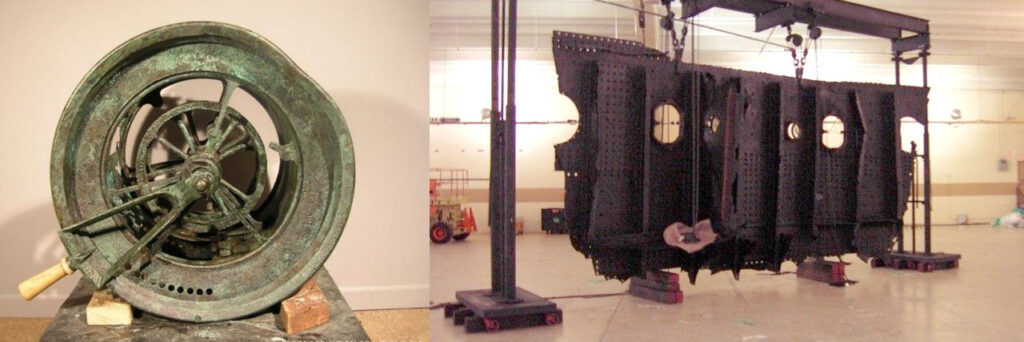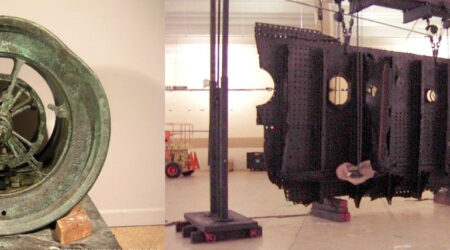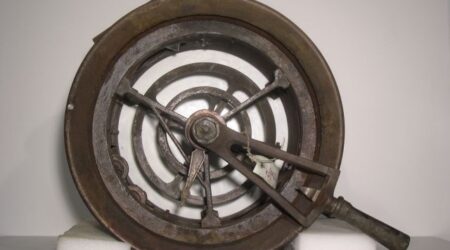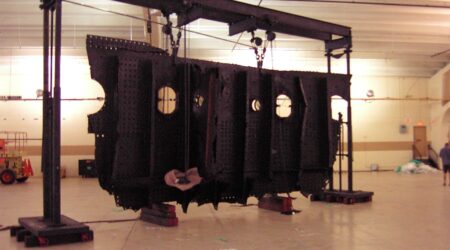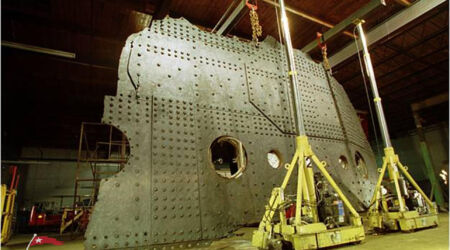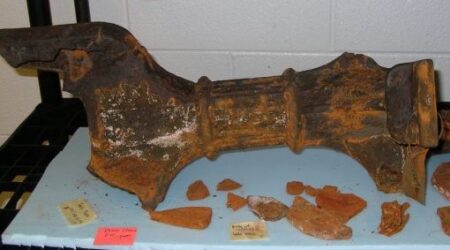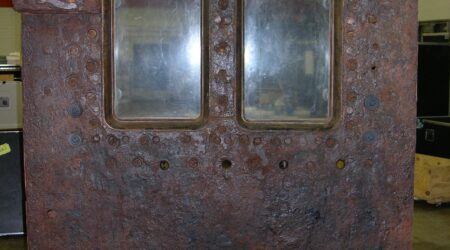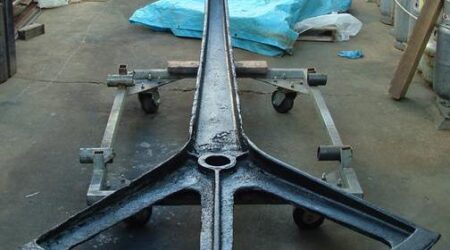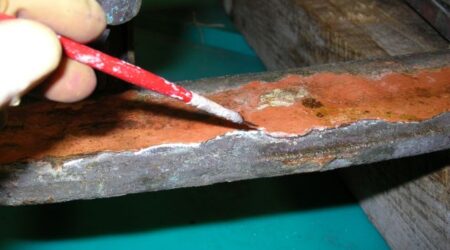Conservation treatment evaluation of a 17-ton hull section recovered rom the R.M.S. Titanic wreck site
At 6:18pm on 10 August 1998 a heavily encrusted piece of iron wreckage emerged into the air for the first time in 86 years. “The Big Piece” as it is referred, weighed nearly 20 tons and measured approximately 27 x 20′ when it was recovered from the R.M.S. Titanic wreck-site debris field. It was originally located on the starboard side of the ship between the 3rd and 4th funnels of the B and C decks.
The construction of the piece is typical of the hull’s construction with wrought iron plates riveted together in various ways to form a continuous watertight metal skin. After over eight decades on the floor of the sea, the iron had significant surface corrosion and was also the home to colonies of “rusticles,” the fetid and voluminous by-product of microorganisms that feast on iron. Bronze elements, such as portal windows and frames, were found to be in excellent working condition. The team was also surprised to find that there were remnants of original paint on both the iron and bronze components.
The shear size, weight, and delicate nature of the hull fragment posed several rigging challenges which had to be overcome quickly so that the treatment of the piece could commence as quickly as possible. EverGreene worked closely with the lead Titanic recovery conservation team—LP3 Conservation of Semur en Auxois, France and Conservator Stephane Pennec—to develop a conservation treatment plan. The plan included the desalinization of the piece using sacrificial anodes and soaking it in a sodium carbonate solution in the largest above ground swimming pool the author had ever seen. Over the 18-month period that the piece remained in the tank, sodium chloride levels of the soaking solution were monitored and plotted to ensure that the desalinization process was progressing properly. Over the course of 18 months that the piece was soaking it traveled to display venues in Boston, St. Paul, and Atlantic City.
Towards the end of its tour “The Big Piece” was fully conserved in our studio. Testing and analysis was conducted to determine the level of surface cleaning that would be necessary to stabilize the artifact without compromising its desirable patina. Eventually, a cleaning procedure was devised that involved the removal of loose corrosion and the rusticles using a 3,000-psi waterjet system followed by drying with propane torches, and then hand picking residual corrosion products and accretions off by hand using scalpels and dental tools. To help passivate the rust a 5% tannic acid solution was applied to the surface and the entire piece was then hot waxed with a specially formulated microcrystalline wax. The bronze elements required minimal treatment and the original paint residue was left intact.
Nearly three years after the treatment, numerous cross country trips, and storage and display in non climate controlled environments, the conservation treatment that was performed on “The Big Piece” in 2000 was showing signs of wear. Some of the problems that were observed include localized disbondment of surface accretions and small areas of salt-bloom that have developed around some of the rivet heads. Considering the unfavorable conditions that the artifact has been subjected to and its lack of maintenance over the three-year period, the treatment has performed very well.
Author: Joseph Sembrat
